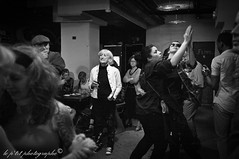The French Revolution was one of the most bloody political upheavals in any country, and the marks of the conflict can still be seen today. Like most olden day countries, France was once ruled by an absolute monarchy, with a privileged circle of aristocracy enjoying the high life while peasants slaved away. In contrast to many other nations, the French, apparently socialist by nature, decided they had enough and rose up, overthrowing the monarchy and executing anyone who could lay claim to the throne.

History buffs visiting Paris will no doubt want to learn more about the revolution by visiting some of the historic buildings that played a part in the revolution or were impacted on by it.
Paris Musuem
The people of France took their stand at the Palace of Versailles
Louis XVI and his family were staying at the Palace of Versailles during the Women's March on Versailles, also known as The October March. It was one of the earliest and most notable events of the revolution and was sparked by the high price and lack of bread in the marketplace of Paris. When the anger over the bread met with revolutionaries who were after liberal political reforms, things soon got out of hand as the protesters robbed the city armoury of weapons and marched to the royal palace at Versailles. In violent scenes, the group besieged the palace and demanded reform of Louis XVI. This march is seen to be extremely significant in the history of the French Revolution, as the next day the crowd commanded the King and his family to return with them to Paris, thereby effectively ending the independent authority of the monarch and brought about a new balance of power.
Visitors to the Palace of Versailles will find that it is one of the largest and most luxurious castles in the whole world. Amazingly, the building encompasses around 2,143 windows, 1,252 fireplaces and 67 staircases, and to mark its importance, has been on UNESCO's World Heritage List for 30 years.
The Chapelle Expiatoire is a hidden tribute to the Restoration
The Chapelle Expiatoire really is a little gem when it comes to Paris attractions related to the revolution. Commissioned by Louis XVIII in 1815, and designed by the architect Pierre-Francois-Leonard Fontaine in 1815, the tribute really should not be missed by visitors to Paris.
Situated off the beaten tourist trail, the beautiful neoclassical chapel is situated on the former Madeleine cemetery, which was where Louis XVI and Marie Antoinette were buried after they were guillotined. Within the Chapelle Expiatoire is a hall, two gantries and a vault.
The Swiss Guards who gave their lives while trying in vain to protect the royal family at Tuileries Palace on August 10th 1792, are also remembered in the monument.
Visitors will enjoy a stroll in the public garden surrounding the monument, being noted for its tranquil feel.
The Chateau de Maison-Laffitte is an example of the many national buildings that changed hands during the Revolution
This magnificent building was built between 1630 and 1651, and is known to be a significant example of the French baroque style. It belonged to the Longueil family until 1777 when it passed to the estate of the Comte d-Artois - the brother of Louis XVI. However, during the Revolution, it was seized by the people and confiscated as national goods before being sold to army provisioner Monsier Lauchere in 1798.
French Revolution Seen Through the Historic Buildings of Paris Christo and Jeanne-Claude: Over the River, A Work In Progress Video Clips. Duration : 1.87 Mins.October 11, 2008 - January 25, 2009 Washington , DC Christo and Jeanne-Claude: Over The River, a Work in Progress, an exhibition of more than 150 photographs, collages, drawings, and maps, will chronicle the artists process as they prepare to assemble and suspend massive silvery fabric panels horizontally over the Arkansas River in Colorado. Highlighting The Phillips Collections longstanding commitment to representing important developments in modern and contemporary art, the exhibition at The Phillips will be followed by a national tour. The Phillipss exhibition will trace the development of this ambitious project over the past 16 years by displaying the process and materials that will be used to accomplish the artistic and engineering feat. It will be accompanied by a catalogue, and the museum will also screen documentary films on the projects of Christo and Jeanne-Claude. The exhibition is organized by The Phillips Collection, Washington, DC Generously sponsored by Edgar H. and Janet M. Brenner. © The Phillips Collection, 2008
Tags: Christo, and, Jeanne-Claude, Arkansas, River, Colorado, Art, museum, The, Phillips, Collection, Washington, DC, Films, fabric
No comments:
Post a Comment